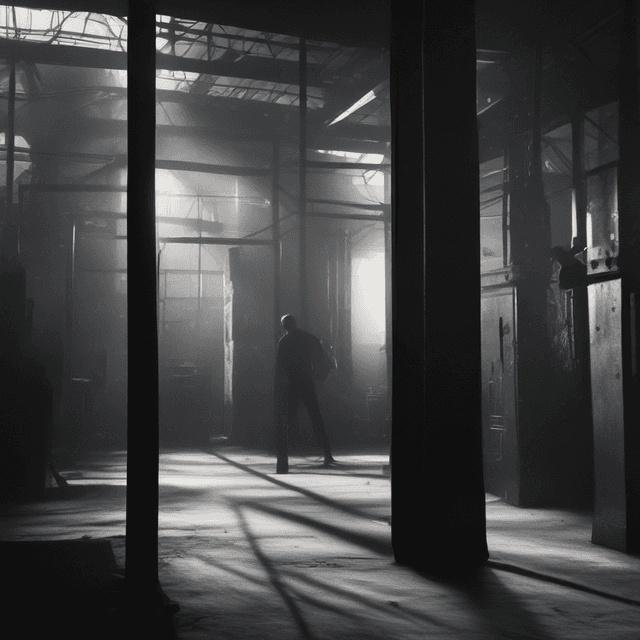
| Legacy | Influenced the development of genres like cold wave, industrial, and ethereal wave |
| Origin | Continental Europe |
| Key Bands | |
| Definition | A reaction against the commercialization of punk rock, embracing avant-garde and experimental musical forms with strong political themes |
| Originated | Late 1970s and early 1980s |
| Characteristics | Dark, atmospheric sounds; experimental and avant-garde |
| Musical Influences | Krautrock • Musique concrète • Industrial music |
Post-punk refers to a diverse range of underground and independent music scenes that emerged across continental Europe in the late 1970s and early 1980s, primarily as a reaction against the increasing commercialization and gentrification of the punk rock movement. Drawing inspiration from the avant-garde, experimental, and politically-engaged sensibilities of early punk, post-punk acts developed a distinctly European sound and aesthetic that would go on to influence numerous subsequent musical genres.
Whereas the original punk explosion in the UK had been rooted in working-class youth rebellion and anti-establishment sentiment, many European youth in the late 1970s sought to take punk's radical ethos in a more intellectually and sonically adventurous direction. Disillusioned by the perceived co-option of punk by the mainstream music industry, these artists looked to the more esoteric, confrontational strains of the European avant-garde for inspiration.
Key influences on the emerging post-punk sound included the krautrock movement in West Germany, which had pioneered a hypnotic, minimalist form of electronic and experimental rock in the early 1970s. Bands like Kraftwerk, Can, and Neu! provided a template for the use of repetitive, mechanized rhythms and textures. Composers of musique concrète and other forms of electronic music, such as Pierre Schaeffer, Karlheinz Stockhausen, and Luigi Nono also left an indelible mark on post-punk's sonic palette.
Some of the most influential and pioneering post-punk acts emerged from cities across continental Europe, including:
These groups and many others crafted a diverse range of sounds united by their rejection of commercial rock, embrace of the experimental, and alignment with revolutionary leftist movements.
The post-punk sound was marked by its austerity, dissonance, and a pervasive sense of unease. Bands often stripped down their instrumentation to the essentials - drums, bass, and treated guitars or synthesizers - using repetitive, hypnotic rhythms and textures to create an immersive, hypnagogic atmosphere.
Whereas British post-punk acts like Joy Division and The Fall incorporated more traditional rock structures and hooks, the continental European scene placed a greater emphasis on avant-garde techniques like tape loops, found sounds, and minimalist composition. This resulted in music that was darker, more abstract, and less immediately accessible than its Anglo counterparts.
Visually, post-punk artists embraced a stark, industrial-influenced aesthetic, often incorporating elements of surrealism, Dada, and other anti-establishment art movements. Album artwork, stage design, and fashion tended towards muted, monochromatic color palettes and a sense of urban decay.
The political and social consciousness that had been present in the original punk movement found even more overt expression in the post-punk scene. Many acts aligned themselves with Marxist, anarchist, and other revolutionary socialist causes, often incorporating slogans and imagery into their work.
Lyrical themes ranged from anti-capitalist critiques of consumer culture and alienation in modern urban life, to explorations of sexual and gender nonconformity, to confrontations with the legacy of fascism and state power. This "militant modernism" marked a departure from punk's sometimes nihilistic tendencies, instead offering a more constructive vision for radical societal transformation.
Unlike the British post-punk bands that found varying degrees of mainstream success, continental European post-punk remained largely an underground, cult phenomenon. Independent labels like Monochrom, Sunrise, and Mute Records helped sustain these vibrant yet marginalized scenes, fostering a DIY ethic and a strong sense of community.
The influence of European post-punk, however, would prove to be far-reaching. Its embrace of avant-garde and experimental approaches laid the groundwork for the development of genres like industrial, cold wave, and ethereal wave in the 1980s and beyond. Additionally, the political radicalism and communitarian spirit of the post-punk underground would inform the rise of later alternative and independent music cultures.
While less commercially successful than their British counterparts, continental European post-punk acts left an indelible mark on the musical and cultural landscape, demonstrating the transformative power of music as a tool for social and political engagement.